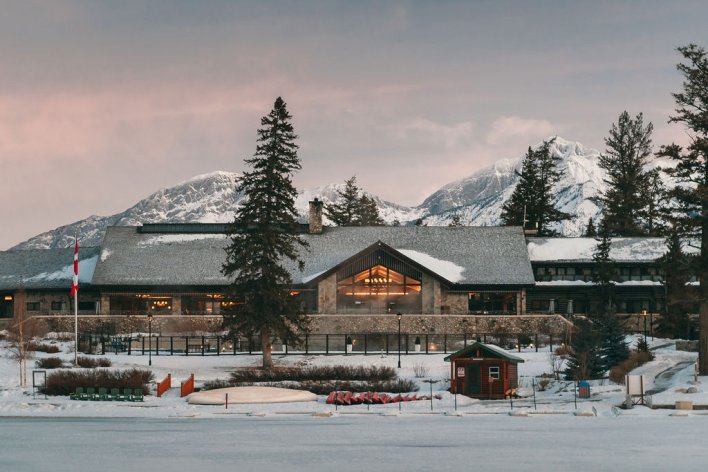Winter in the Mountains
Winter in the mountains is a scene straight out of a snow globe, where nature drapes the landscape in a pristine blanket of white. In the Canadian Rockies, jagged peaks sparkle under the low winter sun, while frozen lakes and frosted forests create a serene, almost otherworldly beauty. The air is crisp and invigorating, carrying the faint scent of pine as snow crunches underfoot. Over in Whistler’s Coastal Mountains, towering evergreens stand cloaked in thick snow, and the alpine village glows warmly amidst the icy majesty. Here, winter brings a dynamic blend of tranquility and adventure, with skiers carving through powdery slopes and cozy fireside retreats offering a haven from the chill. Across these mountain ranges, winter’s splendor transforms every vista into a breathtaking masterpiece, inviting exploration and awe at every turn.

The Weather – December to February
Banff
- Day: -5°C to -15°C (23°F to 5°F
- Night: -20°C to -10°C (-4°F to 14°F)
Lake Louise
- Day: -5 to -15°C (23–5°F)
- Night: -10 to -20°C (14 to -4°F)
Jasper
- Day: -5°C to -12°C (23°F to 10°F)
- Night: -15°C to -20°C (5°F to -4°F)
Whistler
- Day: -2°C to 4°C (28°F to 39°F).
- Night: -10°C to -5°C (14°F to 23°F)
Your Winter Packing List
- Insulated winter coat, snow pants, and thermal layers
- Waterproof snow boots with good traction
- Gloves, a toque, and a neck warmer
- Sunglasses and sunscreen for sunny snow days


Best Known For
- Skiing & Snowboarding – Banff, Lake Louise, Jasper & Whistler
- Ice Skating – Banff, Lake Louise, Jasper & Whistler
- Zip-Lining – Whistler
Winter Wildlife
Winter in the mountains offers unique opportunities to see wildlife in Jasper, Lake Louise, Banff, and Whistler. While many animals hibernate or migrate, several species remain active, adapting to the cold and snowy landscapes. Here’s what you might spot:
Jasper, Lake Louise, and Banff (Canadian Rockies):
- Elk: Commonly seen grazing in open meadows or near townsites, as they avoid deep snow in higher elevations.
- Bighorn Sheep: Often spotted along rocky slopes or highways, where snow is less likely to accumulate.
- Mountain Goats: Look for these hardy animals on steep, snow-dusted cliffs.
- Coyotes and Wolves: Active year-round, they can be seen hunting or traveling in packs, often at dawn or dusk.
- Snowshoe Hares: Their white winter coats help them blend into snowy surroundings, but they’re still visible in forested areas.
- Birds: Species like the gray jay (whiskey jack), raven, and ptarmigan are commonly seen during winter. Bald eagles and golden eagles can also be spotted.
- Marmots and Ground Squirrels: These animals hibernate during winter and are not visible until spring.
Whistler (Coastal Mountains):
- Black Bears: While most black bears hibernate, some may emerge briefly during mild winter days.
- Deer: Often seen in lower elevations, foraging where snow is less deep.
- Coyotes and Foxes: Active during winter, they may be seen hunting small mammals.
- Birds: Stellar’s jays, woodpeckers, and chickadees are common sightings, along with bald eagles soaring overhead.
- Beavers and Otters: Active near unfrozen streams and rivers, especially where water remains accessible.
- Snowshoe Hares and Squirrels: Adapted to snowy conditions, they’re often seen darting through forested areas.
Winter wildlife viewing is magical but requires extra caution. Keep a respectful distance, avoid feeding animals, and adhere to local guidelines to ensure your safety and the animals’ well-being.
Things to Do

Downhill Skiing

Maligne Canyon Icewalk

Fat Tire Biking

Snowshoeing
Best Winter Offers

Ski Vacations & Packages
Save up to 30% Off
Pack your ski pass and hit the slopes in Banff, Jasper, Lake Louise, and Whistler with our best ski offers. The longer you stay, the more time you have to shred and explore ski pistes and backcountry trails for miles.
Featured Articles

November in Lake Louise

Golf Scoring Explained: Master the Game, One Stroke at a Time

Fairmont Holiday Movie Guide
Where to Stay








